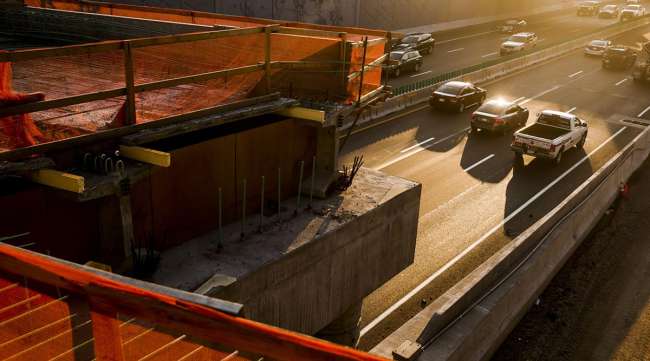Bloomberg News
Most Cities Prioritizing Roads, Bridges With Infrastructure Aid

[Stay on top of transportation news: Get TTNews in your inbox.]
Most U.S. cities will pour their share of the federal infrastructure spending package into fixing crumbling roads and bridges, prioritizing motor vehicle infrastructure over other projects like public transit, airports and railways.
About four in five cities said they plan to spend their money on local roads, bridges and major projects, with 56% prioritizing road safety, according to a survey of 153 localities conducted by the National League of Cities and Polco. About 60% said they would use funds from the Infrastructure Investment and Jobs Act on water projects.
A little more than a third of the municipalities said they would spend their money on broadband Internet access. About 26% said they’d put the money toward public transportation, while a little more than a quarter cited electric vehicles, buses, and ferries. Just 13% identified airports as a spending priority. Ports and waterways and passenger and freight rail came in at the bottom with less than 10% each.
NLC and @polco_us released a joint survey to show how communities of all sizes are assessing their infrastructure projects and federal grant opportunities. This survey provides a current snapshot of priorities, and shows where local leaders plan to invest:https://t.co/HSFU7GxdbJ — National League of Cities (@leagueofcities) July 19, 2022
The focus on roads and bridges comes as the American Society of Civil Engineers says the U.S. needs nearly $2.6 trillion over 10 years to bring the country’s infrastructure into good repair. In March 2021, the society gave the U.S. a grade of C- across 17 infrastructure categories, with some of the lowest grades appearing in roads, transit and water.
Want more news? Listen to today's daily briefing above or go here for more info
The Infrastructure Investment and Jobs Act, signed in November by President Joe Biden, provides $550 billion in new cost-shared federal funds to municipalities, meaning states and cities must shoulder a portion of project costs themselves. To match federal funding, around a third of survey respondents said that they will tap into special reserves, state funds and municipal bonds.
Nearly half reported that they plan to utilize local recovery funds from the American Rescue Plan, a $1.9 trillion stimulus package that allocated $350 billion in aid to states and cities during the height of the pandemic.
“These once-in-a-lifetime investments from the Bipartisan Infrastructure Law allow communities across the country to tackle infrastructure upgrades and badly needed infrastructure projects to improve the lives of residents,” said the league’s executive director, Clarence E. Anthony. “From coast to coast, from the biggest cities to the smallest towns, local governments are leading the way in rebuilding and strengthening our nation’s infrastructure.”




